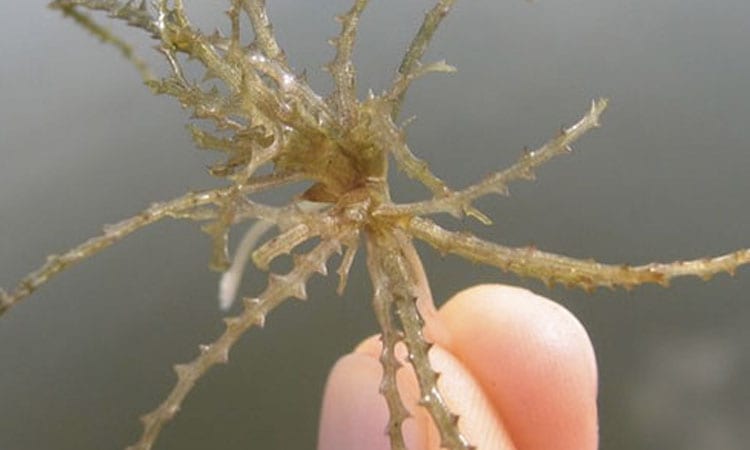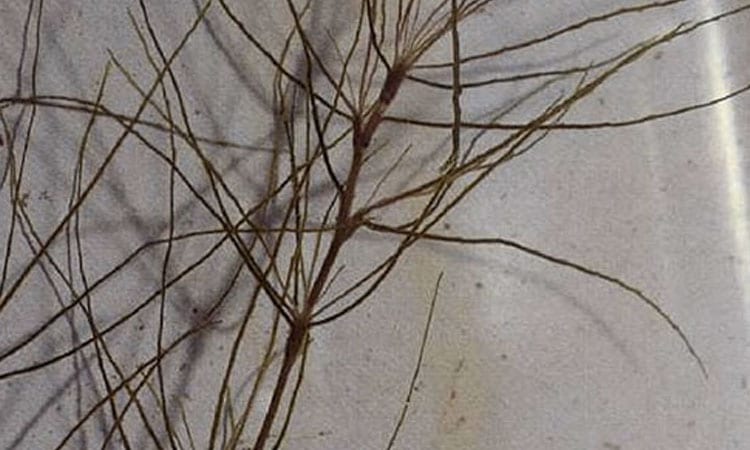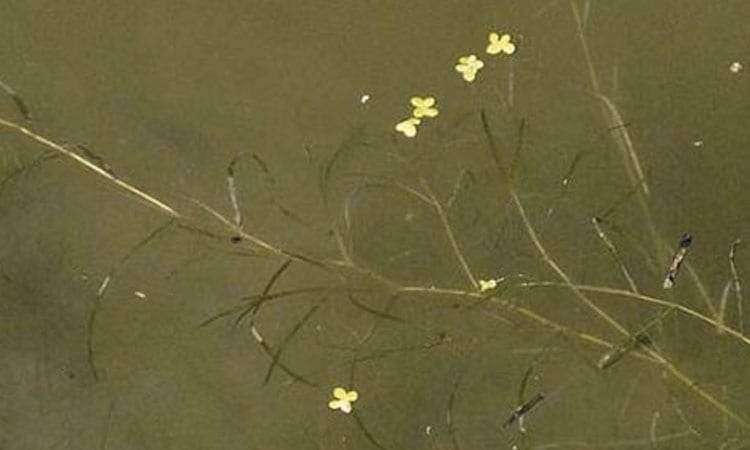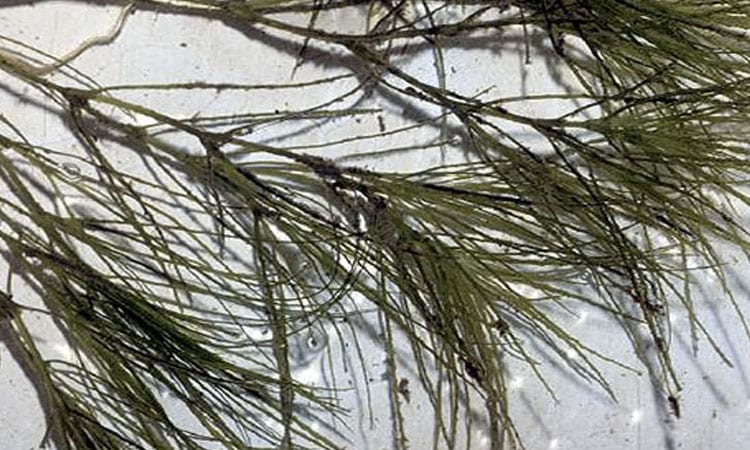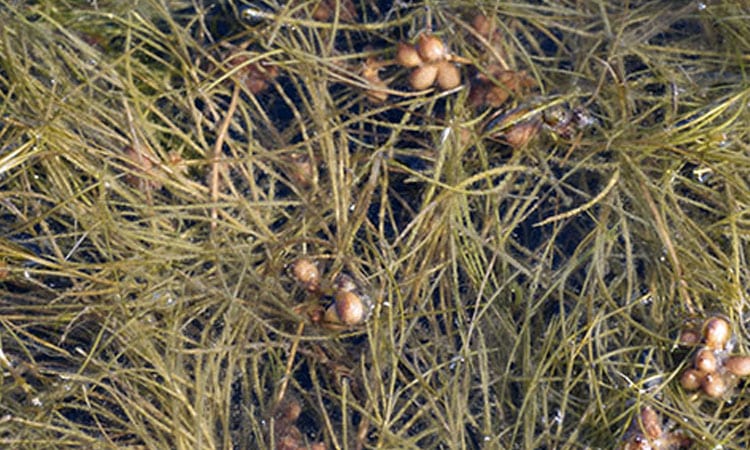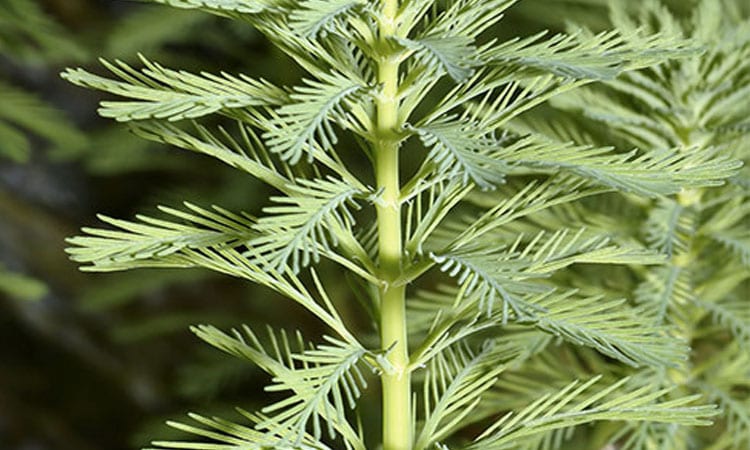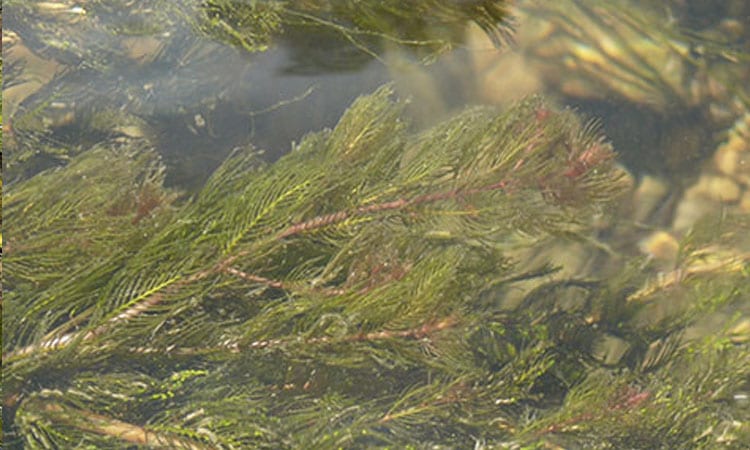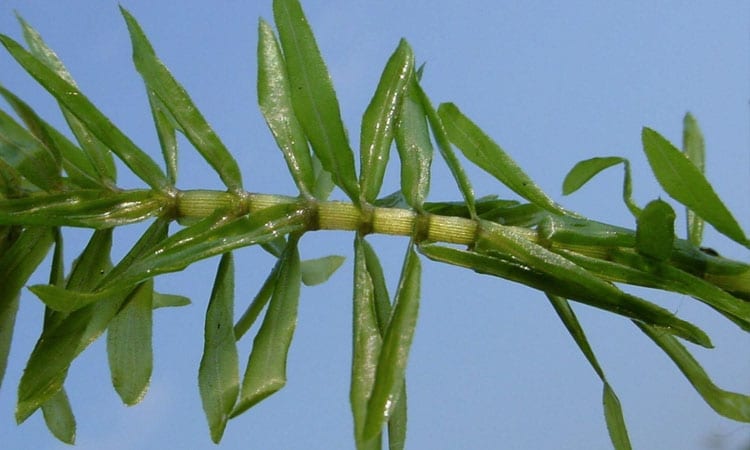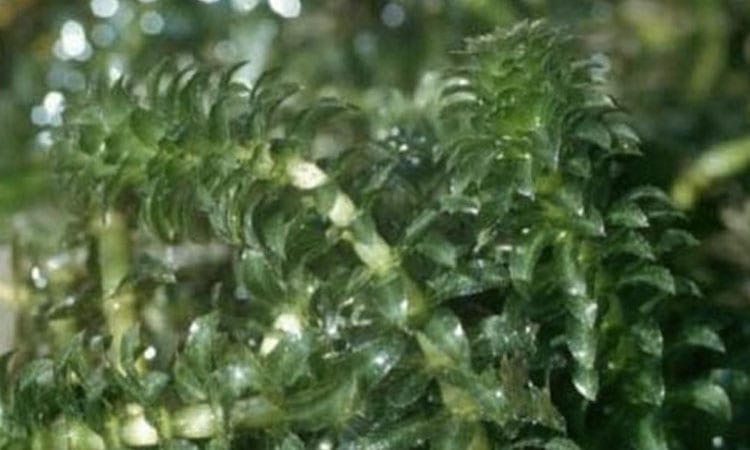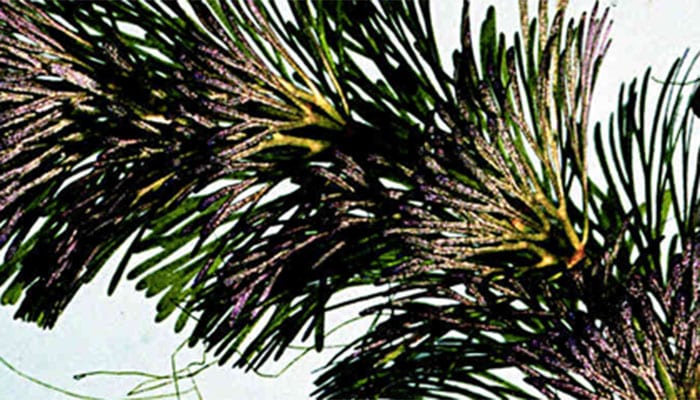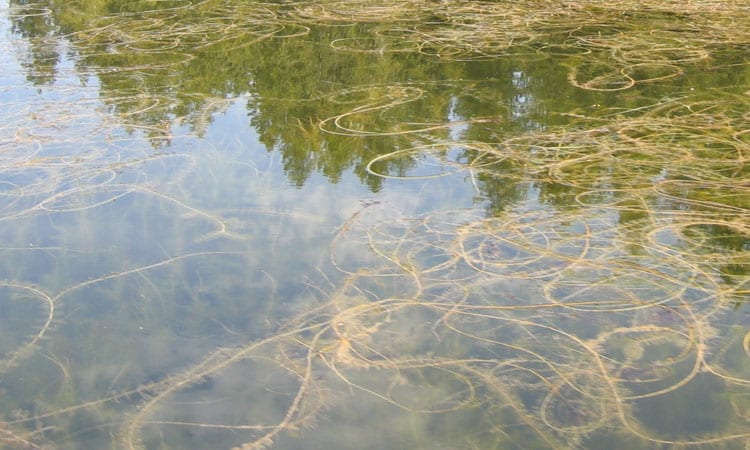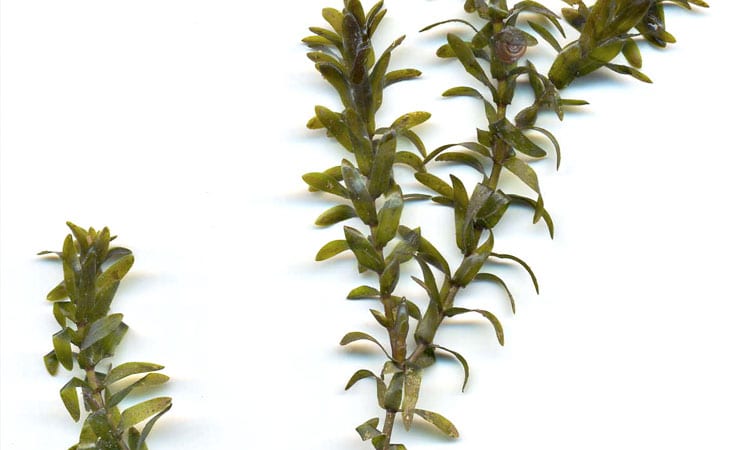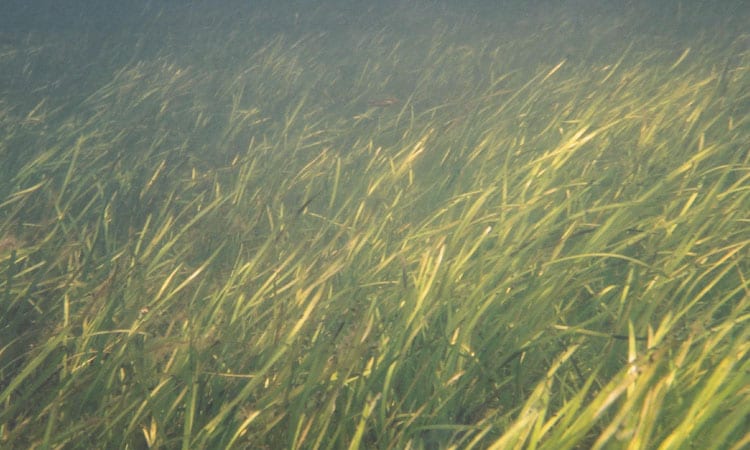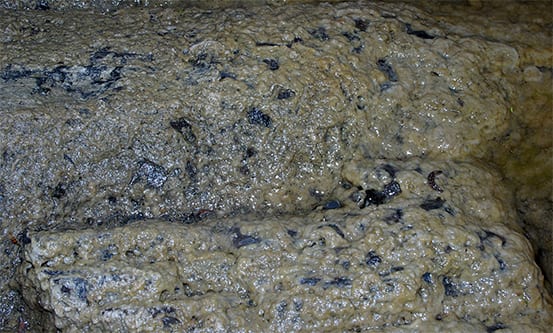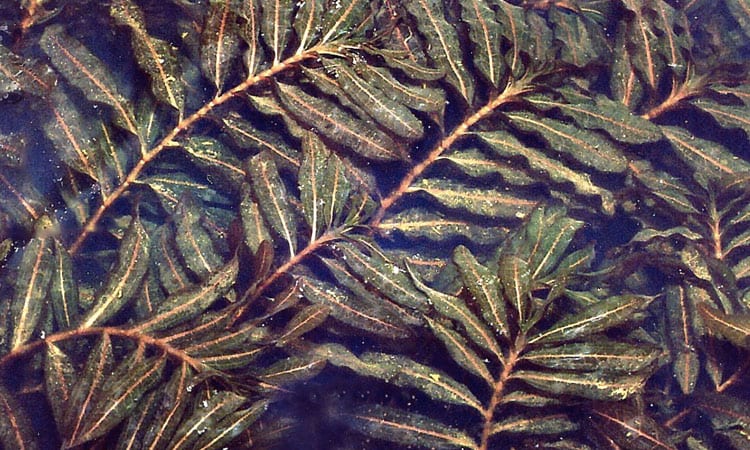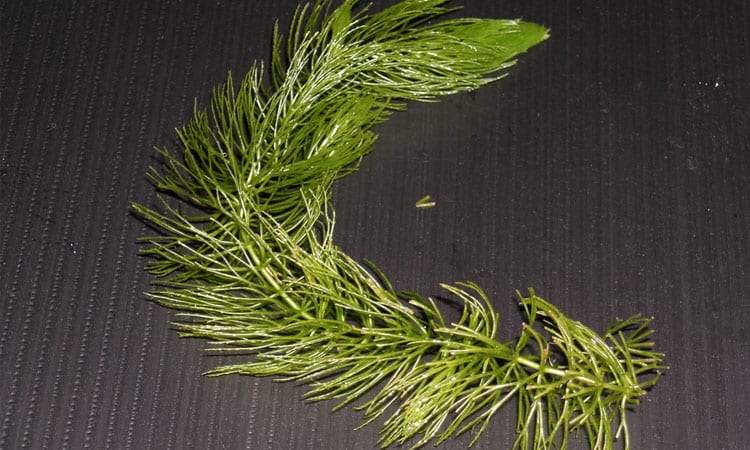Unlike free-floating or rooted lake weeds, submerged lake weeds pretty much stay under the surface where they develop, root, and thrive. The presence of these weeds is more than an annoyance for water lovers, especially when it comes to boating, fishing, water skiing, and any other type of recreational water activity. Since you can’t easily spot submerged lake weeds, you don’t know they are there, and therefore could become entangled in them without warning.
That being said, there is a healthy amount of submerged lake weeds that is recommended; generally, within 20% of the lake should contain submerged weeds. However, anything over that is when problems begin and measures should be taken to eliminate the additional submerged weeds.
Common Submerged Lake Weeds
Some of the most common submerged lake weeds look like regular plants or grass. These include American pondweed, Parrotfeather, Hydrilla, Gray Fanwort, Naiad, and Eurasian Watermilfoil. Native submerged weeds are not as aggressive as Non Native weeds that seem to strive for lake domination. Though the roots of these submerged plants stay on the lake’s bottom, you can often see leaves floating on the surface that can help you identify these plants, and some varieties produce tall weeds that may peek over the surface of the water, especially if they include flowers or long stems.
One of the downsides to having non-native submerged weeds in your lake or pond is the simple fact that they reproduce quickly, which means the weeds can take over your water in a very short amount of time. Though some of the native species offer benefits to other plant life and animals, moderation is key, and when non-native or invasive submerged weeds take over, it can be problematic.
Controlling and Eliminating Submerged Lake Weeds
Not all types of submerged lake weeds are bad. In fact, many can be good for lakes and ponds, in small amounts. However, there are a couple of types of submerged weeds that should be completely eliminated from bodies of water due to the overall damage they do.
One of these is Milfoil. Eurasian Watermilfoil grows and spreads rapidly, and the tangled leaves can create havoc in water, making it practically impossible to enjoy at all. This is one of the most invasive types of lake weeds there is, and should be completely treated as well as controlled so there is no chance of regrowth for the best results.
Another one of the most harmful submerged lake weeds is the Curly Leaf Pondweed. This weed is fairly easy to treat, and with good control methods, it may not come back, which is for the best. Curly Leaf Pondweed is another negative submerged lake weed that you don’t need around, and it can take over water with bad consequences.
Most other submerged lake weeds can be left alone if they aren’t impacting the biodiversity of the water, because a lake needs some weeds in order to thrive the way it is supposed to, so never remove all of the weeds from a lake. Contact Lake Bottom Blanket for safe methods of weed removal, preferably during the springtime when the water becomes warmer.



